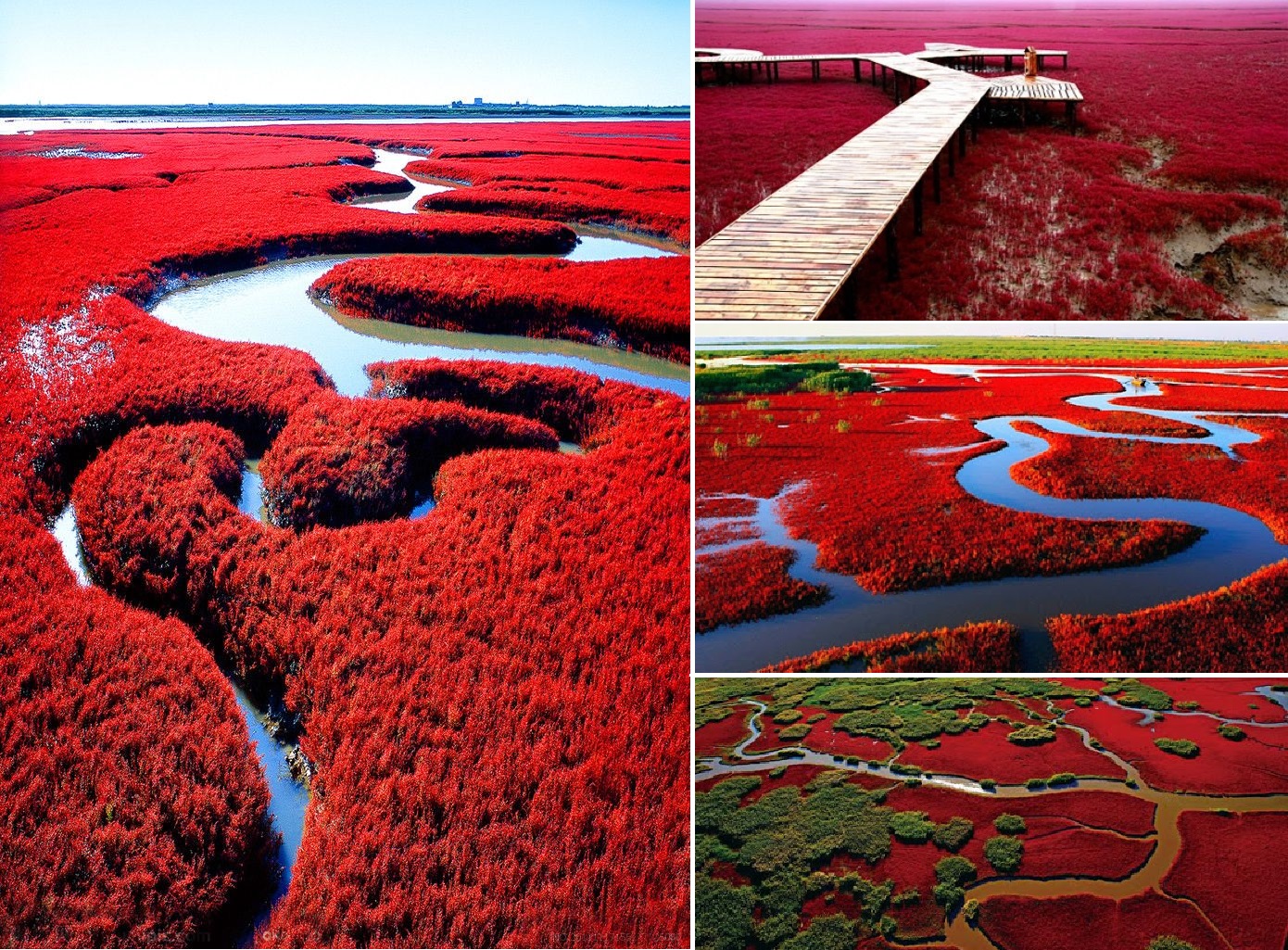One of the rarest sights in the world, China’s Panjin Red Beach lies within an enormous wetland on the bank of the Liaohe River in Liaoning Province. This 132 square-kilometre coastal nature reserve is home to over 260 species of birds, 399 other animal species and, of course, a landscape that is almost unreal. The startling crimson blanket resembles blood vessels and veins in the human body.

The rich red color comes from a plant called seepweed. Scientifically known as Suaeda salsa, its life cycle begins in April or May. This particular species is one of the rarest forms of seepweed in the world, as seepweed does not typically change color at all.

But this one does. It turns a striking jade green in spring and summer before transforming into bright red from August to October. As winter nears, it turns purple before dying. This otherworldly, unique chemical reaction is due to the wetland’s position near the coast, where the soil is both highly saline and highly alkaline.

The Suaeda genus thrives in salty environments, a quality known as halophytic. Sediment from the Liaohe River nurtures seepweed growth. Some halophytes are alkaline-tolerant succulents, absorbing the many nutrients and chemicals in the water and soil, much like the seagrass on the ocean floor. Except this one’s alkaline tolerance turns it red.

Its uncanny ability to survive in harsh environments intrigues scientists, but even more exciting is the plant’s potential as a fuel. Most academic papers on biodiesel stem from the research done on Suaeda.

The Red Beach is also home to the endangered Red-Crowned Crane, the rarest crane species on earth. As a result, it has become somewhat of a bird sanctuary for other species as well, such as white storks and Black Beaked Gulls. It is also a popular pit stop for birds migrating from Eastern Asia to Australia. The wetland’s abundance in fish and mitten crabs, but most importantly, its undisturbed surroundings make it both a perfect stopover and a long-term residence.

Since 1988, the Chinese government has strictly protected the beach, which is closed to the public except for one section which includes a 2,000m viewing boardwalk. Yet the Red Beach is also important for people. The excellent soil fosters the growth of short-grained rice and bamboo shoots. Paper is produced from the reeds that also thrive here.

The beach also lies near the third largest oil deposit in China, and the government goes to considerable lengths to prevent industrial pollution from damaging the ecosystem.

The city of Panjin lies just 30km away, and once the world returns to some form of normalcy, add this spectacular site to your list of wondrous places to visit.



